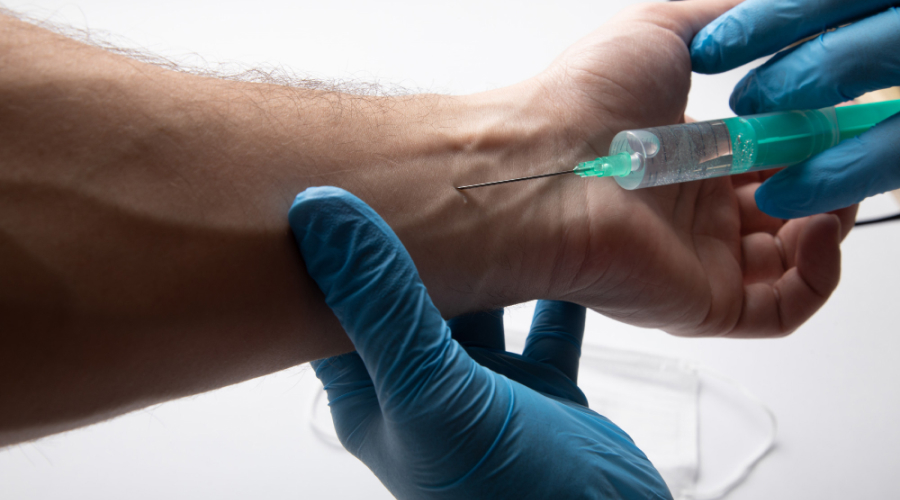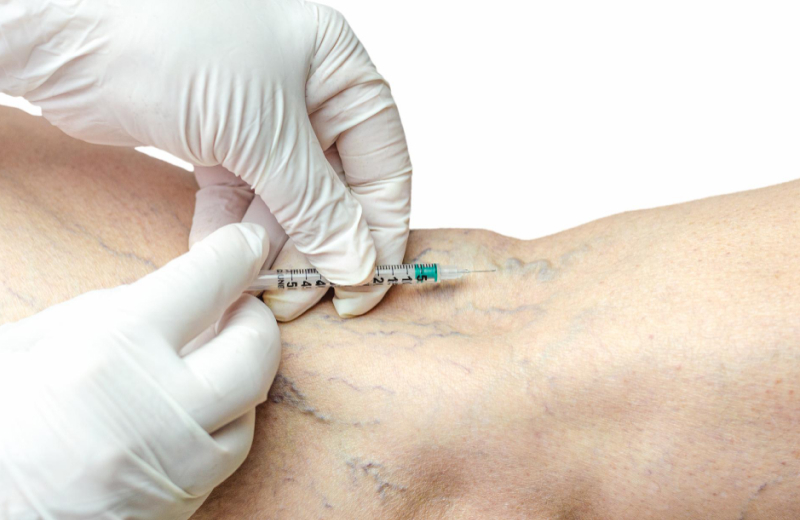What is Sclerotherapy?
Sclerotherapy is a minimally invasive treatment used to eliminate varicose and spider veins. It involves injecting a special solution into the affected veins, causing them to collapse and gradually fade away. This procedure is widely used for both cosmetic improvement and symptom relief, making it a preferred choice for treating small to medium-sized varicose veins.
Sclerotherapy uses a sclerosant solution (such as polidocanol or sodium tetradecyl sulfate) that irritates the vein walls, making them stick together. Over time, the body absorbs the treated vein, and blood flow is redirected to healthier veins.
Step-by-Step Procedure:
- Preparation: The targeted veins are identified, and the skin is cleansed to ensure a sterile procedure.
- Injection: A fine needle is used to inject the sclerosant solution into the affected veins.
- Vein Reaction: The solution causes the vein walls to stick together, and eventually seal off.
- Massage & Compression: The treated area is gently massaged, and compression stockings may be applied to aid in vein closure.
- Completion: The procedure is typically completed in 15 to 30 minutes, and patients can walk immediately afterward.

Advantages of Sclerotherapy:
- Non-Surgical: No incisions or anesthesia are required.
- Quick & Convenient: The procedure takes less than 30 minutes, making it ideal for busy individuals.
- Minimal Downtime: Most patients resume daily activities immediately, with some restrictions on heavy exercise.
- High Success Rate: Studies show 80–90% effectiveness in eliminating treated veins after a few sessions.
- Versatile Treatment: Effective for spider veins, reticular veins, and small varicose veins.
Conclusion
Sclerotherapy is a safe, effective, and widely used treatment for varicose and spider veins. Its quick procedure time, minimal recovery, and proven results make it a popular choice for patients seeking both medical and cosmetic vein treatments.
Frequently Asked Questions
Are Regular Dental Cleanings Necessary?
The European languages are members of the same family. Their separate existence is a myth. For science, music, sport, etc, Europe uses the same vocabulary. The languages only differ in their grammar, their pronunciation and their most common words. Everyone realizes why a new common language would be desirable.
Do I Need to See a Dentist Even If My Teeth Feel Fine?
The new common language will be more simple and regular than the existing European languages. It will be as simple as Occidental; in fact, it will be Occidental. To an English person, it will seem like simplified English, as a skeptical Cambridge friend of mine told me what Occidental is. The European languages are members.
What’s a Dental Cleaning Like at Ruby Canyon Dental?
To an English person, it will seem like simplified English. Their separate existence is a myth. The new common language will be more simple and regular than the existing European languages. It will be as simple as Occidental; in fact, it will be Occidental. To an English person, it will seem like simplified English, as a skeptical Cambridge friend of mine told me what Occidental is. The European languages are members of the same family.
When Should I Change My Toothbrush?
The new common language will be more simple and regular than the existing European languages. It will be as simple as Occidental; in fact, it will be Occidental. To an English person, it will seem like simplified English, as a skeptical Cambridge friend of mine told me what Occidental is. The European languages are members of the same family. Their separate existence is a myth.
How Do I Know If I Have Gum Disease?
The new common language will be more simple and regular than the existing European languages. It will be as simple as Occidental; in fact, it will be Occidental. To an English person, it will seem like simplified English, as a skeptical Cambridge friend of mine told me what Occidental is. The European languages are members of the same family. Their separate existence is a myth.







